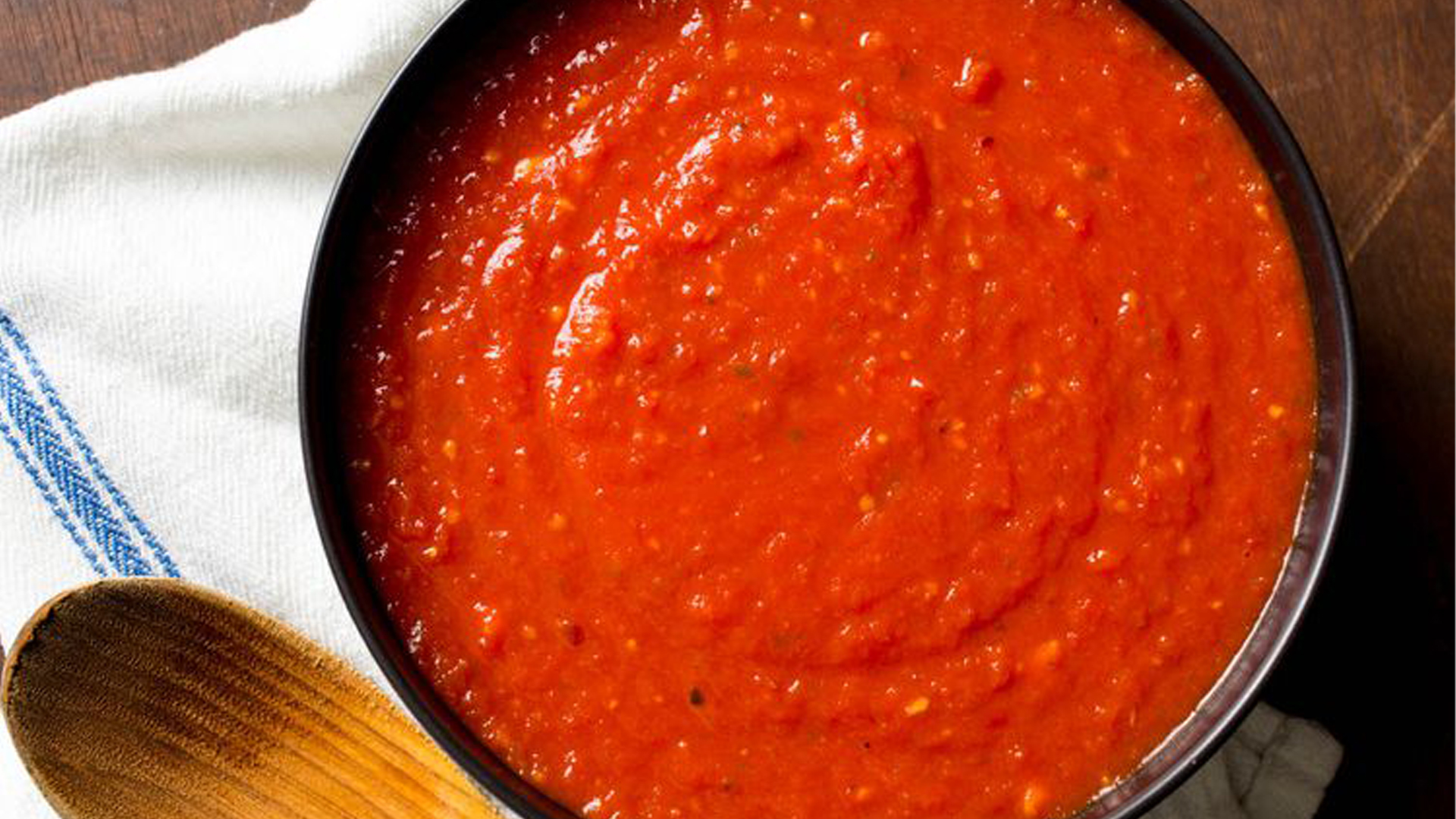March is National Sauce Month and what better way to celebrate than to cook up some of our favorite Italian pasta sauces! All 20 regions in Italy are famous for different kinds of pasta sauces. Northern Italy is home to many meaty sauces while the warm climate of Southern Italy lends sauces to include more vegetables and seafood. Some of the most common pasta dishes we eat today were actually invented in America. Italian immigration to the U.S. created an entire cuisine known as Italian-American. Today, there are so many pasta sauces, each of which serves a saucy purpose of its own. Here are 7 easy pasta sauces you need to whip up during National Sauce Month:
Marinara

(Photo Credit: thecozyapron.com)
The birthplace of marinara sauce has been contested for generations, though we can place a safe bet it was in southern Italy. The origin of the sauce's name is a bit more clear. The term marinara directly translates to "seafaring" in Italian. The sauce was mostly consumed by Italian merchants out at sea, not because it was eaten with seafood, but because the main ingredients didn't spoil as quickly as meat and fish on ships. Sailors could feast on meals of pasta with tomato sauce as a hearty, sustainable meal. Marinara sauce is less thick in texture and easier to cook than plain tomato sauce. Typically made with San Marzano tomatoes, garlic, crushed red pepper, and basil, the sauce is delicious on its own as well used as a base for the more complicated tomato-based sauces.
Cacio e Pepe

(Photo Credit: giallozafferano.com)
Cacio e pepe, one of the four Roman pastas, is made using just three ingredients: cacio (cheese, specifically from sheep's milk), pepe (black pepper), and pasta. It’s believed that Italian shepherds invented the cacio e pepe that we know today. Traveling throughout the year in the Apennine Mountains, the shepherds carried dried pasta, black pepper, and cheese. These three ingredients were easy to transport, easy to store, and produced a comforting dish on cold nights. Ingredients like cream, butter, and olive oil often have been added to the sauce since making its way to the United States. However, a traditional cacio e pepe only needs quality cheese and a sprinkle of black pepper.
Pesto

(Photo Credit: seriouseats.com)
Pesto is one of the few pasta sauces that doesn't call for tomatoes or meat and doesn't need to be cooked. Pesto alla Genovese comes from Genoa, the capital of the Liguria region and pesto gets its name from “pestare”, the Italian verb that means "to crush." The traditional green-colored sauce consists of pine nuts, basil, hard Italian cheese, and garlic, all ground together in a coarse paste using extra virgin olive oil. It’s typically recommended to pair pasta shapes with curves and ridges with pesto.
Arrabbiata

Arrabbiata is a simple sauce made from tomatoes, pecorino cheese, garlic, and oil The most significant ingredient that goes into the making of arrabbiata sauce is chili pepper or pepperoncini. Arrabbiata is the Italian word for angry, therefore spicy and arrabbiata go together. The most important factor in making arrabbiata is getting the best ingredients that go into its making - fresh tomatoes, whole dried peperoncini rossi or hot red peppers over chili flakes, and pecorino romano make the difference.
Gricia

(Photo Credit: italianfoodforever.com)
Another one of the four Roman pastas, gricia, is a peculiar pasta sauce of only 3 ingredients. It’s made with pecorino romano, black pepper, and guanciale. It is even believed that gricia is the oldest of the four Roman pastas, the base from which the other three sauces are made, carbonara, amatriciana and cacio e pepe. It is essential that you use guanciale and not pancetta if you're making the sauce at home. Also, always use pecorino romano cheese and not parmesan. The sauce will lack the sharp saltiness that is needed to balance the intensity of the guanciale.
Frutti di Mare

(Photo Credit: us.kiwilimon.com)
Frutti di mare is a dish fit for a king. Frutti di mare translates to "fruit of the sea" in Italian, and this dish is a combination of seafood in a delicious tomato sauce.The classic recipe includes clams, mussels, shrimp, and scallops. Depending on which Italian region you’re in, frutti di mare can also include squid, anchovies, sardines, and other local varieties. The best seafood combination will always be whatever the catch of the day. You will see many Italians eating this pasta on Christmas Eve for the annual fish feast..
Aglio e Olio

Simply translated from Italian as "garlic and oil," aglio e olio is as simple as a pasta sauce gets. Aglio e olio is considered to be a part of “cucina povera” cuisine from Naples. Since aglio e olio requires few ingredients, the quality of the ingredients makes the difference. Peperoncini, if used, are best when added fresh and deseeded. Traditional aglio e olio recipes don’t combine cheese, but a fresh hard Italian cheese like Pecorino Romano or Parmigiano Reggiano can be added. As for the olive oil, the better its quality, the better your sauce will taste.
Arianna DiCicco
Arianna DiCicco is an educator and writer from California, born into an Italian American restaurant family with strong ties to her grandparents’ home in Abruzzo, Italy. She has lived in San Francisco, Rome and New York City where she’s made deep connections within the Italian communities and gained new perspectives about her own culture. With a Masters in International Education, Arianna has a love and passion for learning and educating others about Italian history & culture.


